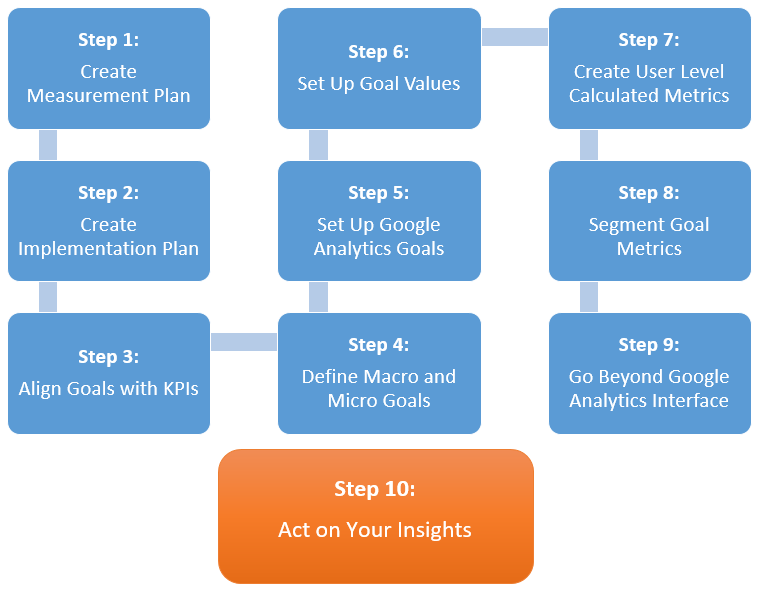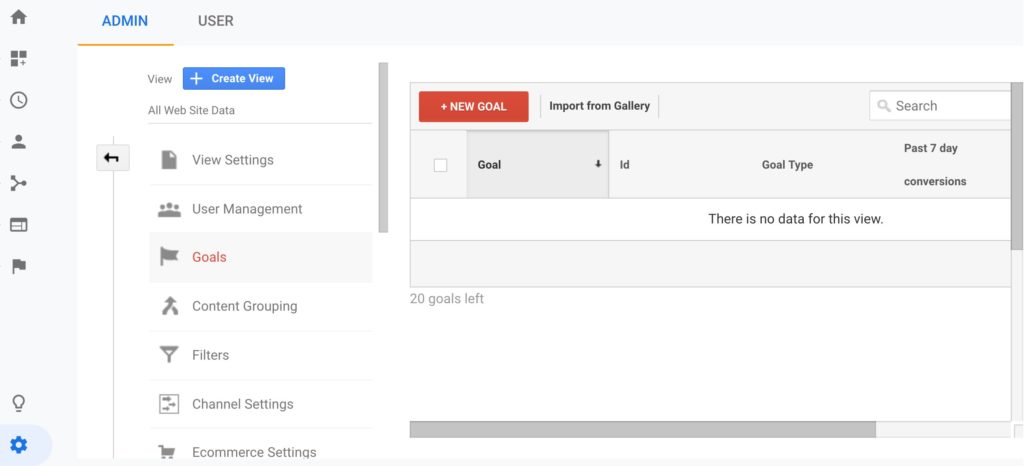Discover What Data Is Google Analytics Goals Unable to Track
Discover What Data Is Google Analytics Goals Unable to Track
Blog Article
Discover the Limitations of Google Analytics Goals: Revealing the Data Types That Remain Untrackable
As organizations increasingly count on data-driven decision-making, understanding the limitations of devices like Google Analytics becomes extremely important. While Google Analytics Goals offer valuable insights right into user interactions, there exist information types that avoid monitoring, posturing difficulties to a comprehensive understanding of customer habits. These untrackable information types increase inquiries regarding the precision and completeness of the analytics information that companies heavily count upon for their electronic strategies. Curious to reveal the concealed blind places in your data evaluation procedure?
Insufficient User Journey Tracking
Incomplete customer journey tracking within Google Analytics can hinder the ability to precisely examine user actions. When the user journey is not fully tracked, there are gaps in the information that avoid a detailed understanding of just how individuals engage with a website. This lack of insight can cause missed out on opportunities for optimization and improvements to the user experience.
One common issue with incomplete individual journey tracking is the failure to see the complete course that users take previously completing an objective or leaving the website. Without this information, it is testing to recognize where individuals might be experiencing obstacles or rubbing factors that stop them from transforming. Additionally, incomplete monitoring can obscure the effect of specific advertising efforts or website changes on user behavior.
To resolve this restriction, it is critical to set up correct monitoring mechanisms within Google Analytics to record the entire user trip. This may include establishing occasion tracking, objective funnels, or utilizing devices like Google Tag Supervisor to guarantee that no important communications go unrecorded. By getting a detailed sight of the user journey, website proprietors can make more enlightened choices to enhance individual engagement and drive conversions.
Attribution Obstacles
Browsing through acknowledgment obstacles in Google Analytics calls for a complete understanding of exactly how various touchpoints contribute to the overall conversion process. Acknowledgment difficulties emerge from the intricacy of modern-day consumer trips, where customers interact with multiple channels before transforming.
One typical attribution challenge is the trouble in associating conversions to the correct resource, particularly in situations where customers engage with several networks prior to transforming. Furthermore, cross-device tracking postures one more attribution difficulty, as users usually change between tools during their trip, making it challenging to track their communications perfectly.
Offline Conversions
Given the difficulties associated with connecting conversions accurately in online networks, the measurement of offline conversions provides a substantial possibility for marketing professionals seeking a much more comprehensive understanding of their clients' trip. Offline conversions refer to activities that customers absorb the real world, such as making purchases in brick-and-mortar shops or over the phone, participating in occasions, or engaging with printed products - what data is google analytics goals unable to track. These conversions are critical for companies that run both online and offline, as they give valuable understandings right into the efficiency of advertising projects throughout different touchpoints
Tracking offline conversions traditionally positioned a substantial obstacle for marketers, as it was challenging to connect these activities back to particular on-line communications properly. However, with advancements in technology, such as the combination of CRM systems, one-of-a-kind identifiers, and coupon codes, services can currently basics bridge the space in between online and offline information to acquire an extra all natural sight of consumer behavior. By properly measuring offline conversions, marketing professionals can enhance their techniques, assign resources more effectively, and eventually enhance the overall consumer experience.
Cross-Device Tracking
Cross-device monitoring plays a crucial duty in recognizing the interconnected nature of consumers' electronic communications across numerous gadgets. In today's omnichannel globe, where customers seamlessly switch over between tablets, smartphones, and desktops, tracking their actions throughout these gadgets is necessary for marketing professionals to acquire a thorough sight of their customer trip.

Furthermore, personal privacy worries and policies such as GDPR and CCPA have further complicated cross-device tracking. With users demanding even more control over their information and raised constraints on tracking modern technologies, online marketers need to discover cutting-edge and privacy-compliant ways to connect user interactions throughout gadgets.
Dynamic Material Interaction
Understanding individual engagement with dynamic material is essential in maximizing electronic advertising strategies for enhanced target market communication. Dynamic material describes internet site components that change based upon customer habits, preferences, or various other elements, providing a customized experience. Nevertheless, tracking user communications with vibrant material poses challenges for conventional analytics tools like Google Analytics.
While Google Analytics can track basic communications like clicks and page sights, it might battle to capture even more nuanced engagements within dynamic web content. what data is google analytics goals unable to track. Metrics such as time invested in specific vibrant aspects, hover activities, or interactions within pop-ups are commonly not easily quantifiable using typical tracking methods. This constraint impedes marketing professionals' capacity to completely grasp exactly how customers are engaging with dynamic material and customize their techniques appropriately

Verdict
In final thought, click to investigate Google Analytics objectives have constraints in tracking incomplete individual trips, attributing conversions precisely, catching offline conversions, tracking cross-device communications, and measuring dynamic material interaction. These restraints highlight the value of discovering added monitoring approaches and tools to gain a more extensive understanding of customer behavior and conversions beyond what Google Analytics can supply.
While Google Analytics Goals offer valuable understandings right into customer interactions, there exist data kinds that thwart tracking, posturing challenges to a detailed this contact form understanding of customer actions.Insufficient individual journey monitoring within Google Analytics can impede the capability to accurately assess user behavior. When the customer trip is not completely tracked, there are gaps in the information that prevent an extensive understanding of how individuals communicate with a web site.One common issue with incomplete individual trip monitoring is the failure to see the full path that users take previously completing a goal or leaving the site. By getting an extensive view of the customer trip, web site owners can make even more informed decisions to boost individual engagement and drive conversions.
Report this page